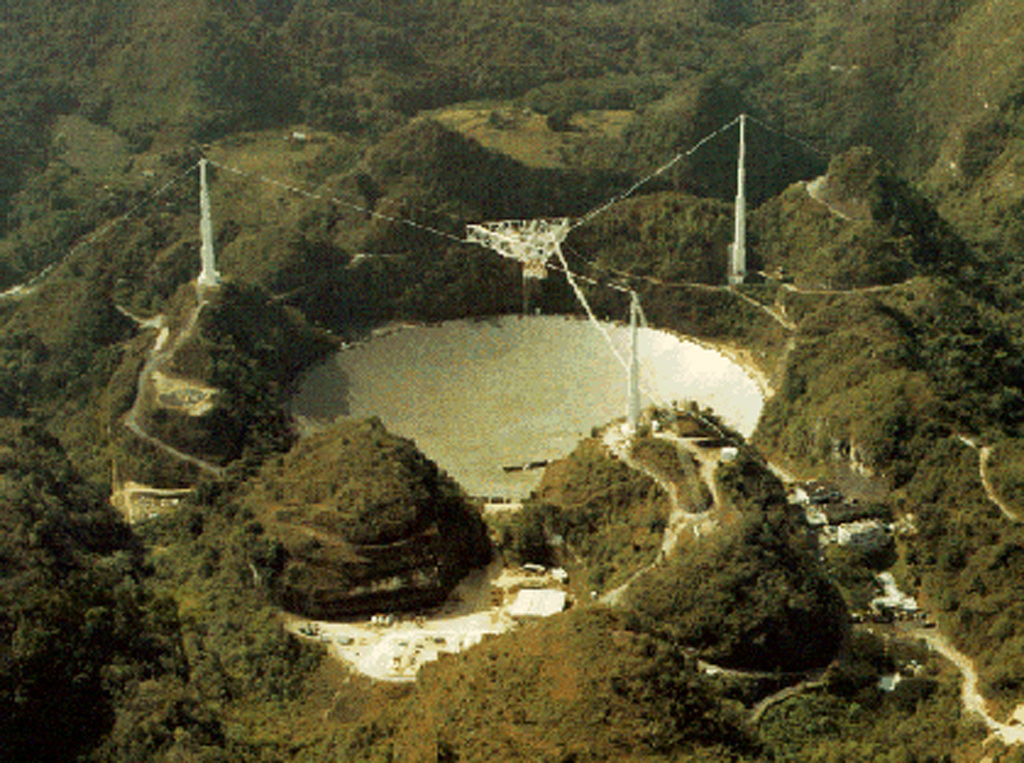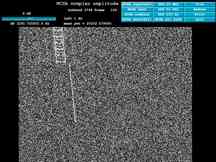
Overview
The Arecibo Radio Telescope played a significant role in the both the NASA SETI program (eventually re-christianed HRMS) and later in Project Phoenix. In 1998, the ground-breaking detection setup that had been used for both the targeted components of the HRMS and Project Phoenix, a combination of hardware and software known as the Targeted Search System (TSS), returned to Arecibo after an eventful six years.
In 1992, when the SETI Institute was last observing in Puerto Rico as part of the HRMS, the TSS had less than half its current capability. But in 1993, the U.S. Congress cancelled the HRMS, Project Phoenix was born, and Arecibo was closed for several years for major upgrades.
During those six years, Project Phoenix raised funds to continue and improve upon the Targeted Search portion of NASA's HRMS. Based on the experience of the initial observations at Arecibo, Phoenix engineers doubled the number of channels and added a follow-up detection system. The improved TSS was up and running at the Parkes Observatory in 1995. After a six month stay at the largest radio telescope in the southern hemisphere, the TSS came back to the SETI Institute for more upgrades. In September 1996, the TSS traveled from California to Green Bank, West Virginia. There it was installed on the NRAO 140-foot telescope, only a few hundred meters from the site of the first (1960) modern SETI program, Project Ozma. A total of 24 weeks of observations were conducted over a span of 18 months at Green Bank.
The upgrades to Arecibo were finished in early 1998, and the telescope was once again ready for astronomical work. After six years away, the Project Phoenix team was ready to go back.
Since Arecibo is a massively large antenna, a similarly imposing instrument is needed for use as the follow-up device, to sort out terrestrial interference from the signal that we were hoping to find. During our run at Arecibo, our secondary telescope was the 250-foot radio telescope at Jodrell Bank, near Manchester, U.K.
Pioneer 10 at Arecibo
With a system designed to pick up interstellar communication signals using what was then the world’s largest single-dish telescope, it was not surprising that we could detect signals from our own civilization. The one described here was from the Pioneer 10 spacecraft. By making observations of this craft, which is far beyond the distance of Pluto, we could effect an “end-to-end” test of the TSS. This was of great use in having confidence in the search hardware and software being used.
The Pioneer 10 spacecraft, which was launched in 1972, was at a distance of roughly 10,000,000,000 kilometers in 1998. Its aging transmitter broadcasted with a power of only a few watts. However, the huge collecting area of the Arecibo antenna brought it in loud and clear.
It took more than 10 hours for Pioneer’s radio signal, travelling at the speed of light, to reach the Earth. After more than 10,000 days of continuous operation, the electronics in its transmitter were beginning to deteriorate. In spite of this, the signal from Pioneer 10 was still an excellent test for the TSS.

The plot shows the power in 924 1-Hz channels over time. Each horizontal row of dots gives a snapshot of the instantaneous amount of power in each of the channels. The larger the dot, the more power in that channel. Every 0.7 seconds a new row of dots is added. Over about two minutes, the picture shown to the left builds up. If a particular channel always had a signal in it, we would see a vertical line since that channel would always have a more power than the other channels, and would tend to have larger than average dots.
The signal from Pioneer 10 drifts in frequency, and consequently moves from channel to channel over time. The plot shows the "carrier wave" portion of the Pioneer signal as a narrow line to the left of center and beginning about a quarter of the way up from the bottom. After about a minute, we shifted to a different frequency to display one of the "side bands". The sideband coveys the actual data being transmitted by the spacecraft.
This is considered a good example of the type of signal we might expect from E.T.
-Seth Shostak, updated: July 2021.
